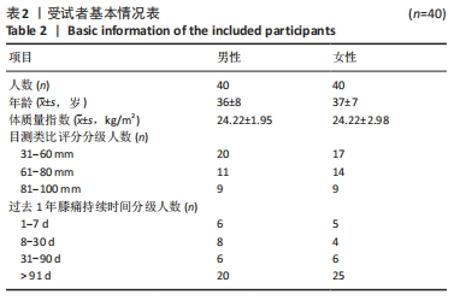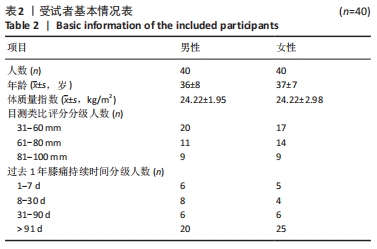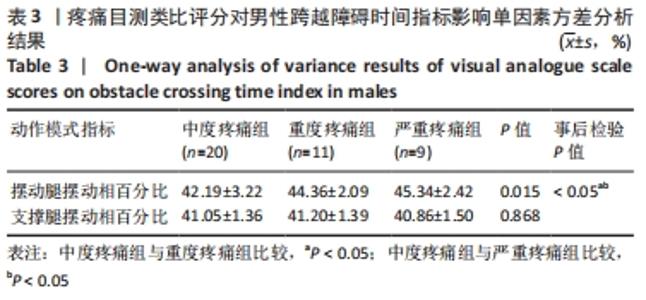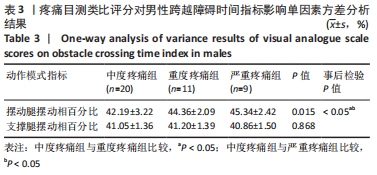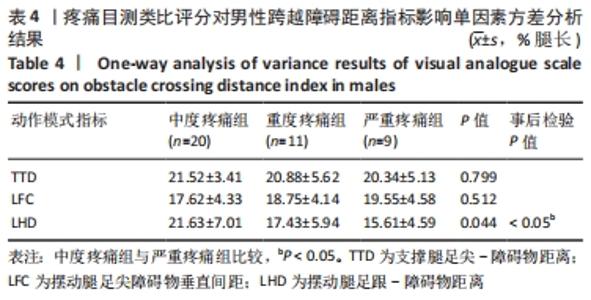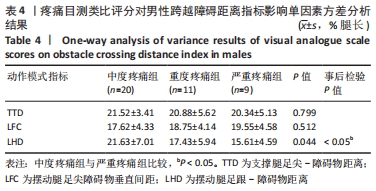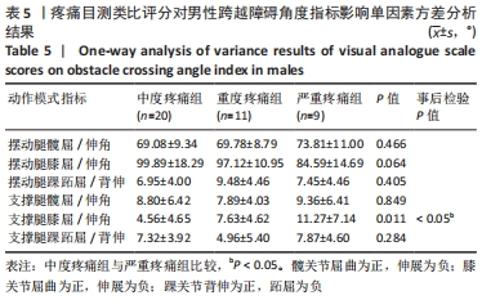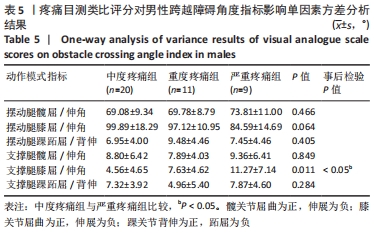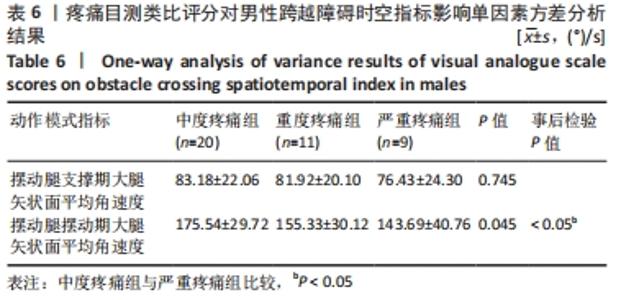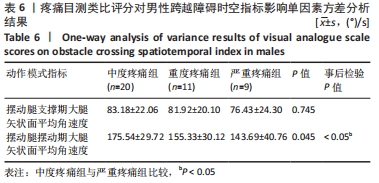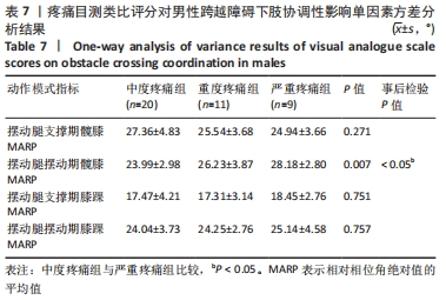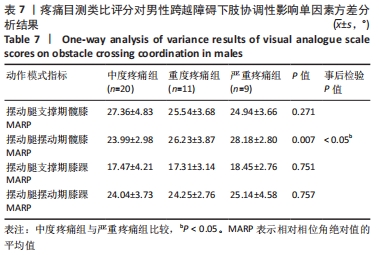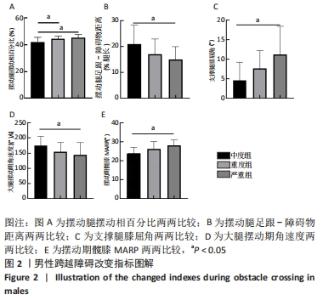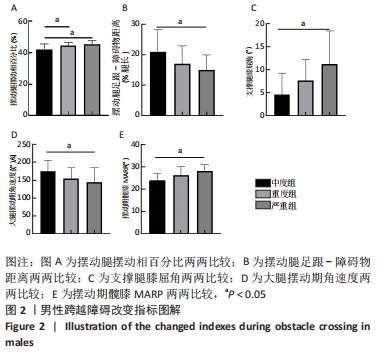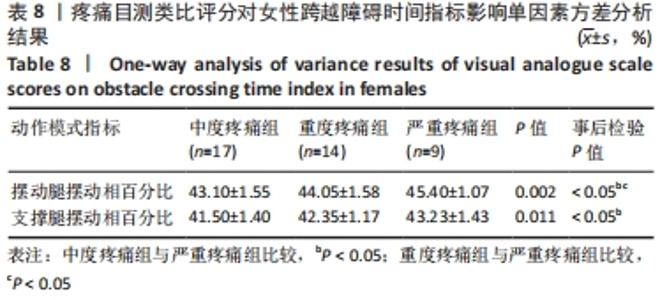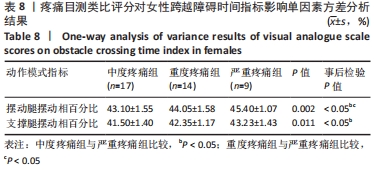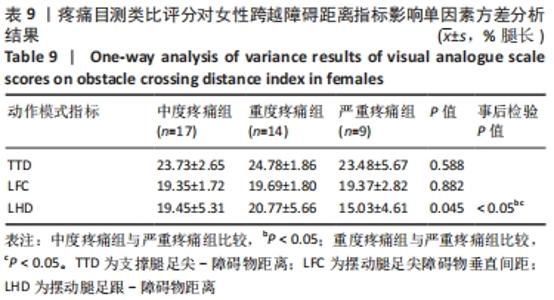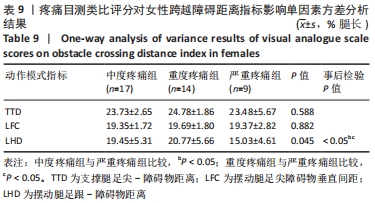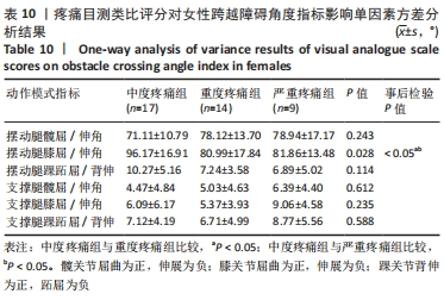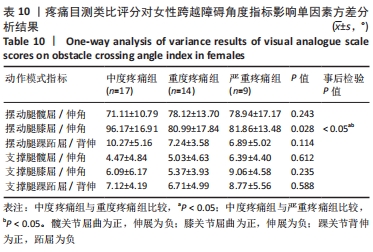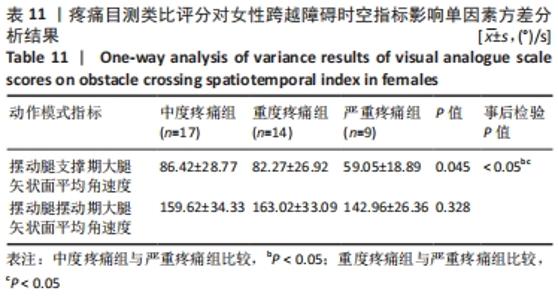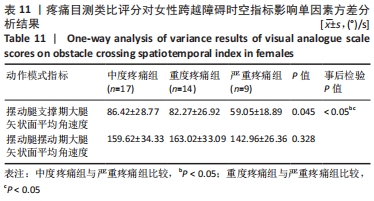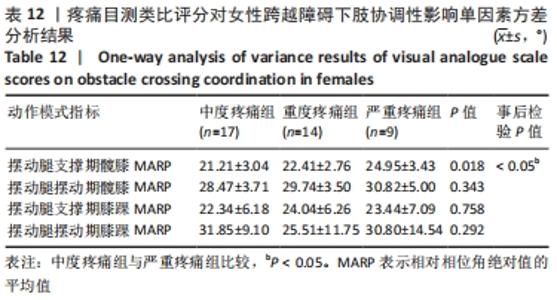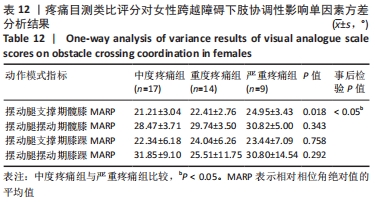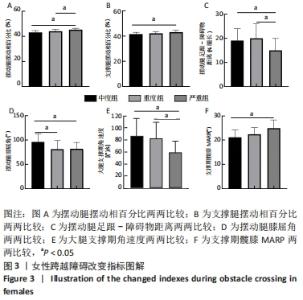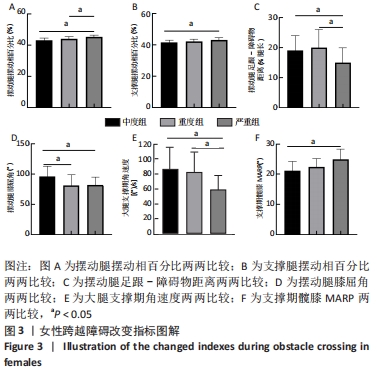[1] 刘展. 人体动作模式和运动链的理念在运动损伤防护和康复中的应用[J]. 成都体育学院学报,2016,42(6):1-11.
[2] MAGYAR MO, KNOLL Z, KISS RM. The influence of medial meniscus injury and meniscectomy on the variability of gait parameters. Knee Surg Sports Traumatol Arthrosc. 2012;20(2):290-297.
[3] 李亚强, 张峻, 顾冬云, 等. 内侧半月板损伤患者关节镜手术前后三维步态特征差异[J]. 医用生物力学,2019,34(3):300-306.
[4] HODGES PW, TUCKER K. Moving differently in pain: A new theory to explain the adaptation to pain. Pain. 2011;152(3):S90-S98.
[5] TJON SS, GEURTS AC, VAN’T PAD BOSCH P, et al. Postural control in rheumatoid arthritis patients scheduled for total knee arthroplasty. Arch Phys Med Rehabil. 2000;81(11):1489-1493.
[6] HASSAN BS, MOCKETT S, DOHERTY M. Static postural sway, proprioception, and maximal voluntary quadriceps contraction in patients with knee osteoarthritis and normal control subjects. Ann Rheum Dis. 2001;60(6):612-618.
[7] RICE DA, MANNION J, LEWIS GN, et al. Experimental knee pain impairs joint torque and rate of force development in isometric and isokinetic muscle activation. Eur J Appl Physiol. 2019;119(9):2065-2073.
[8] FEELEY BT, LAU BC. Biomechanics and Clinical Outcomes of Partial Meniscectomy. J Am Acad Orthop Surg. 2018;26(24):853-863.
[9] HAGINO T, OCHIAI S, SENGA S, et al. Arthroscopic treatment of symptomatic discoid meniscus in children. Arch Orthop Trauma Surg. 2017;137(1):89-94.
[10] GRIFFIOEN M, VAN DIEEN JH. Effects of age and sex on trunk motor control. J Biomech. 2020;102:109607.
[11] HALL M, BRYANT AL, WRIGLEY TV, et al. Does meniscal pathology alter gait knee biomechanics and strength post-ACL reconstruction?. Knee Surg Sports Traumatol Arthrosc. 2016;24(5):1501-1509.
[12] HAYASHI K, MORISHIMA T, IKEMOTO T, et al. Pain Catastrophizing Is Independently Associated with Quality of Life in Patients with Severe Hip Osteoarthritis. Pain Med. 2019;20(11):2220-2227.
[13] PRIORE LB, AZEVEDO FM, PAZZINATTO MF, et al. Influence of kinesiophobia and pain catastrophism on objective function in women with patellofemoral pain. Phys Ther Sport. 2019;35:116-121.
[14] NORHEIM KL, SAMANI A, BØNLØKKE JH, et al. The effects of age and musculoskeletal pain on force variability among manual workers. Hum Mov Sci. 2019;64:19-27.
[15] 陈岩, 孙威, 马腾, 等. 有跌倒史老年人跨越障碍步态特征的研究[J]. 山东体育学院学报,2014,30(5):62-64.
[16] 周志鹏. 神经肌肉功能与前交叉韧带损伤生物力学危险因素的相关性研究[D]. 北京:北京体育大学,2018.
[17] 王盛, 姜文君. 徒手肌力检查发展史及分级进展[J]. 中国康复理论与实践,2015,21(6):666-669.
[18] PIVA SR, FITZGERALD K, IRRGANG JJ, et al. Reliability of measures of impairments associated with patellofemoral pain syndrome. BMC Musculoskelet Disord. 2006;7:33.
[19] LOPES FERREIRA C, BARTON G, DELGADO BORGES L, et al. Step down tests are the tasks that most differentiate the kinematics of women with patellofemoral pain compared to asymptomatic controls. Gait Posture. 2019;72:129-134.
[20] LOPES FERREIRA C, BARROSO FO, TORRICELLI D, et al. Women with patellofemoral pain show altered motor coordination during lateral step down. J Biomech. 2020;110:109981.
[21] HUANG SJ, YU XM, WANG K, et al. Short-Step Adjustment and Proximal Compensatory Strategies Adopted by Stroke Survivors With Knee Extensor Spasticity for Obstacle Crossing. Front Bioeng Biotechnol. 2020;8:939.
[22] 陈娜, 毛玉瑢, 黄东锋, 等. 脑卒中患者跨越不同高度障碍物的运动学分析[J]. 中国康复医学杂志,2015,30(4):334-338.
[23] WANG TM, PEI X, HOU TG, et al. An untethered cable-driven ankle exoskeleton with plantarflexion-dorsiflexion bidirectional movement assistance. Front Inform Technol Elect Eng. 2020;21(5):723-739.
[24] 张宇歌. 基于惯性传感器分析老年女性和年轻女性行走稳定性[D]. 北京:北京体育大学,2019.
[25] STERGIOU N, JENSEN JL, BATES BT, et al. A dynamical systems investigation of lower extremity coordination during running over obstacles. Clin Biomech (Bristol, Avon). 2001;16(3):213-221.
[26] CHEN N, XIAO X, HU H, et al. Identify the Alteration of Balance Control and Risk of Falling in Stroke Survivors During Obstacle Crossing Based on Kinematic Analysis. Front Neurol. 2019;10:813.
[27] LETHEM J, SLADE PD, TROUP JD, et al. Outline of a Fear-Avoidance Model of exaggerated pain perception--I. Behav Res Ther. 1983;21(4): 401-408.
[28] DONELAN JM, SHIPMAN DW, KRAM R, et al. Mechanical and metabolic requirements for active lateral stabilization in human walking. J Biomech. 2004;37(6):827-835.
[29] LU TW, CHEN HL, CHEN SC. Comparisons of the lower limb kinematics between young and older adults when crossing obstacles of different heights. Gait Posture. 2006;23(4):471-479.
[30] ESLAMY M, SCHILLING AF. Estimation of knee and ankle angles during walking using thigh and shank angles. Bioinspir Biomim.Bioinspir Biomim. 2021;16(6). doi: 10.1088/1748-3190/ac245f.
[31] SAID CM, GOLDIE PA, CULHAM E, et al. Control of lead and trail limbs during obstacle crossing following stroke. Phys Ther. 2005;85(5):413-427.
[32] IPPERSIEL P, SHAH V, DIXON PC. The impact of outdoor walking surfaces on lower-limb coordination and variability during gait in healthy adults. Gait Posture. 2021;91:7-13.
[33] WANG C, WANG G, LU A, et al. Effects of Attentional Control on Gait and Inter-Joint Coordination During Dual-Task Walking. Front Psychol. 2021;12:665175.
[34] FAVRE J, JOLLES BM. Gait analysis of patients with knee osteoarthritis highlights a pathological mechanical pathway and provides a basis for therapeutic interventions. EFORT Open Rev. 2016;1(10):368-374.
[35] MALY MR, COSTIGAN PA, OLNEY SJ. Mechanical factors relate to pain in knee osteoarthritis. Clin Biomech (Bristol, Avon). 2008;23(6):796-805.
[36] PIERETTI S, DI GIANNUARIO A, DI GIOVANNANDREA R, et al. Gender differences in pain and its relief. Ann Ist Super Sanita. 2016;52(2):184-189.
[37] TONELLI SM, RAKEL BA, COOPER NA, et al. Women with knee osteoarthritis have more pain and poorer function than men, but similar physical activity prior to total knee replacement. Biol Sex Differ. 2011;2:12.
[38] KESSLER RC. Epidemiology of women and depression. J Affect Disord. 2003;74(1):5-13.
[39] LIN Z, HUANG W, MA L, et al. Kinematic features in patients with lateral discoid meniscus injury during walking. Scientific Reports. 2018;8(1): 5053-5053.
[40] LI Y, WU Y, ZENG Y, et al. Biomechanical differences before and after arthroscopic partial meniscectomy in patients with semilunar and discoid lateral meniscus injury. Am J Transl Res. 2020;12(6):2793-2804.
[41] HARATO K, SAKURAI A, KUDO Y, et al. Three-dimensional knee kinematics in patients with a discoid lateral meniscus during gait. Knee. 2016;23(4):622-626.
[42] 林泽枫, 张余, 马立敏, 等. 外侧盘状半月板损伤患者膝关节在体运动学参数研究[J]. 中国骨科临床与基础研究杂志,2014,6(5):291-296.
|
